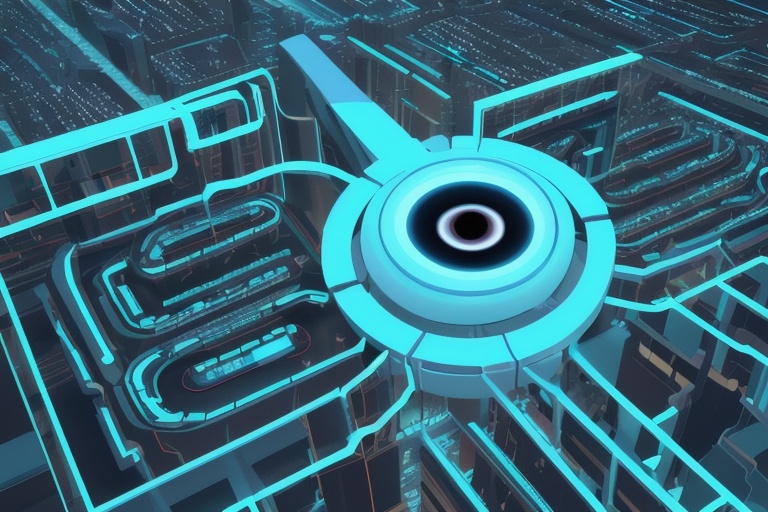The intersection of artificial intelligence, creativity, and the legal system has come to the forefront with a landmark decision from Judge Beryl A. Howell of the US District Court for the District of Columbia. This pivotal ruling has set critical groundwork on the nature of copyright protection when it comes to works generated by artificial intelligence.
The intersection of artificial intelligence, creativity, and the legal system has come to the forefront with a landmark decision from Judge Beryl A. Howell of the US District Court for the District of Columbia. This pivotal ruling has set critical groundwork on the nature of copyright protection when it comes to works generated by artificial intelligence.
At the heart of this discourse is the question of whether AI-created content qualifies for copyright under existing legal structures—a topic that has gained urgency as generative AI platforms like ChatGPT, DALL-E, and Midjourney have become more commonplace. These platforms allow for the creation of visual and artistic works that challenge traditional notions of authorship and creativity, leading to a burgeoning debate on how to handle the legal implications of such advancements.
The case itself arose from the U.S. Copyright Office's decision to reject the application of computer scientist Stephen Thaler, who sought copyright protection for an image crafted by his AI system, named the "Creativity Machine." This decision by the Copyright Office, which was supported by Judge Howell's ruling, emphasized that copyright is a safeguard designed for works derived from human intellectual effort. This exclusion of AI-generated art from copyright protection is a clear indication of the legal system's current stance, and it underscores the necessity for human elements in the creative process in order to claim copyright.
This redefinition of copyright eligibility is not merely a footnote in legal history—it represents a daunting crossroads between rapidly evolving technology and existing copyright laws. As the use of AI in artistic domains continues to grow, the significance of this ruling cannot be overstated: It demands a reassessment of what it means to be a creator in the digital age and how artistic works are protected and monetized under the law.
The Rise of AI-Generated Art
The phenomenon of AI-generated art is both exhilarating and bewildering. Artists and technologists alike are exploring the potential of AI as a tool for augmenting human creativity, creating works that blur the line between human- and machine-made. The accessibility of these AI platforms has democratized creative expression, enabling anyone with an internet connection to produce art that was once the exclusive domain of the skilled artist.
The Legal Puzzle
However, this digital renaissance poses a complex legal conundrum. As AI assumes a more substantial role in the artistic process, determining ownership and rights of the resulting works becomes challenging. Should the traditional standards that have governed copyright for centuries apply to outputs that are not directly crafted by human hands?
Human Authorship as the Cornerstone
The recent ruling reaffirms the cornerstone principle that only human endeavors are eligible for copyright—one that resonates with the universal understanding that the creation of art is intrinsically a human activity, imbued with personal experience and intention. But with AI now capable of generating compelling content, perhaps it's time to reevaluate the constructs of intellectual property protection.
Implications and Consequences
The implications of denying copyright protection for AI-generated art are profound. Without a legal framework to regulate these works, issues concerning artistic attribution, financial compensation, and plagiarism arise. Artists leveraging AI tools must navigate an uncertain terrain with no definitive legal protection for their output.
Looking Forward
The decision rendered by Judge Howell encourages a necessary dialogue about the interplay between innovation and tradition. While this may initially seem like a setback for proponents of AI-generated art, it offers the impetus for comprehensive policy discussions and the development of laws that cogitate the evolving dynamics of creativity in the modern era.
The implications of this ruling reach far beyond the courtroom, steering us towards an in-depth examination of the future role of AI in art and the adjustments required to copyright law to address this new reality. In continued pursuit of these discussions, this series will delve into the intricate relationship between technology, creativity, and law, offering insights into an exciting yet complex new landscape.
In our forthcoming exploration, we will dissect the nuances of this decision and its impact on various stakeholders, ponder the philosophical questions it raises about the nature of creativity, and speculate on how we can shape a legal system that adapts to the inevitable march of technological progress. Join us as we navigate these uncharted waters at the confluence of art and artificial intelligence.
Information for this article was gathered from the following source.


